Ancient Psychedelia: Alien Gods & Mushroom Goddesses
Online Book - Chapter 10, Page 156
Back to Online Book Mainpage / Next Page (Chapter 10, Page 157)
In the tomb of Ramses III, in Luxor, Egypt, c. 1189 BC to 1077 BC, the djed is depicted holding a was scepter in each hand. Each elbow has an ankh dangling off of it and if the image is inverted, it is easy to see the base which is dotted throughout, becomes a mushroom cap for the ankh as the pillar (35e). This can also be seen on an Egyptian faience Amulet w/ djed, ankh, & was scepter, c. 664 to 332 BC (36e, f).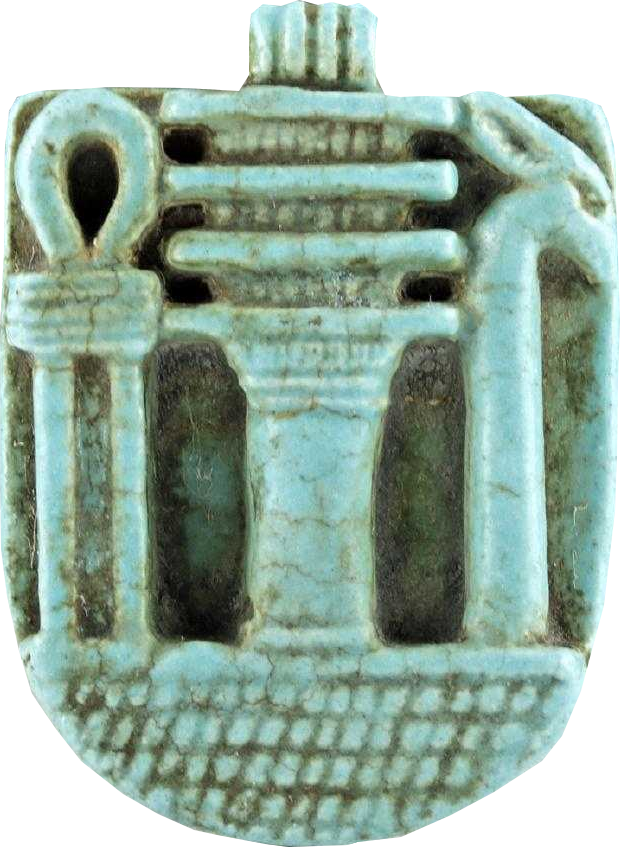 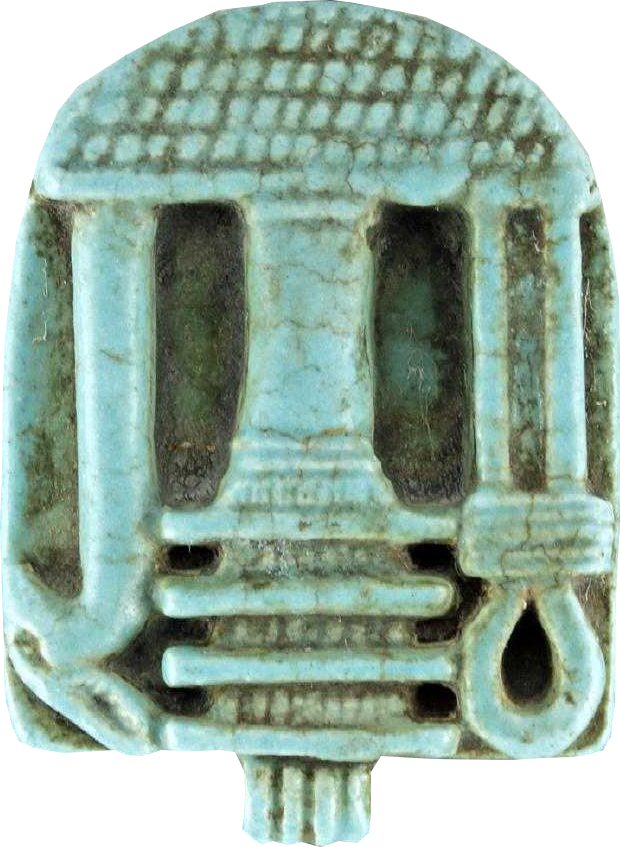 (36e) Egyptian Faience Amulet w/ Djed, Ankh, & Was Scepter c. 664 to 332 BC In one ancient Egyptian wall depiction, a relief from the Temple at Dendera, c. 100 AD, a djed has two arms and is helping to hold up what appears to be an emission of some sort from a flower, which contains a serpent inside it, while other normal looking attendees are helping to hold it up as well. The “ancient alien” crowd make the claim this is electricity in a light bulb, but I would offer up the alternative idea that it is some kind of plant formulae or mixture (37g), possibly lotus flower juice and possibly the mushroom, if the djed is the mushroom, which I believe it is. One possible clue concerning its meaning comes from an image of the djed as a head on a body. And another image shows the djed with a round circle on top, very similar to the Celtic cross. In yet another image, it’s part of the ankh and has hands holding up a round disc, and one more depicts both the ankh and djed as part of one symbol being held by Ptah. All of these clues lead me to believe the djed represented the mushroom. 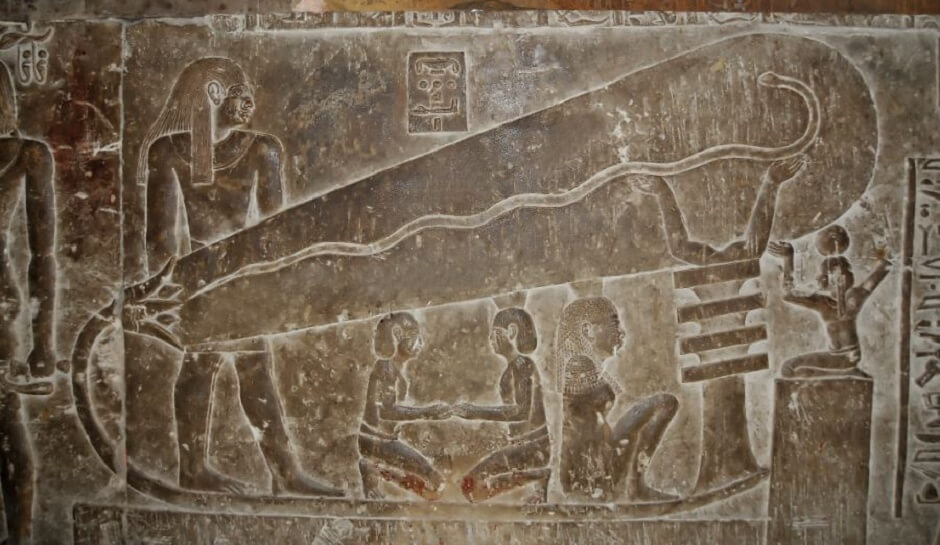 (37g) Relief from the Temple at Dendera c. 100 AD |
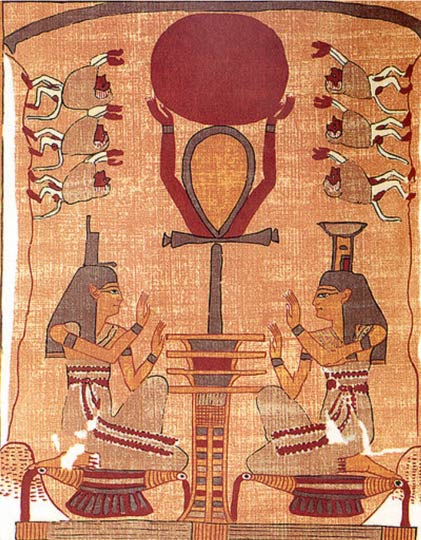 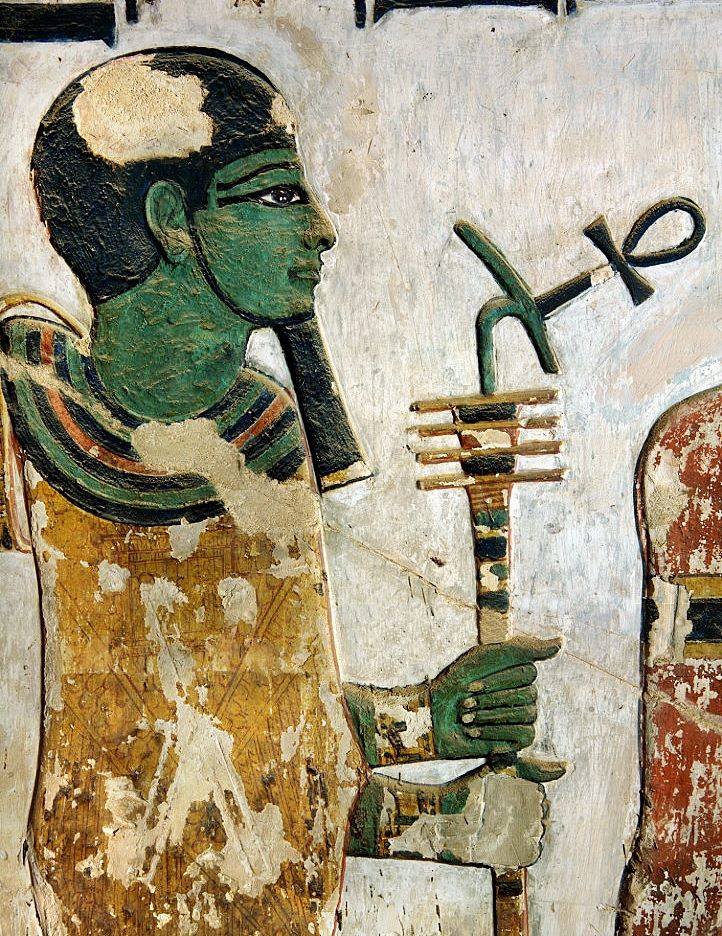 R: (33d) Ptah 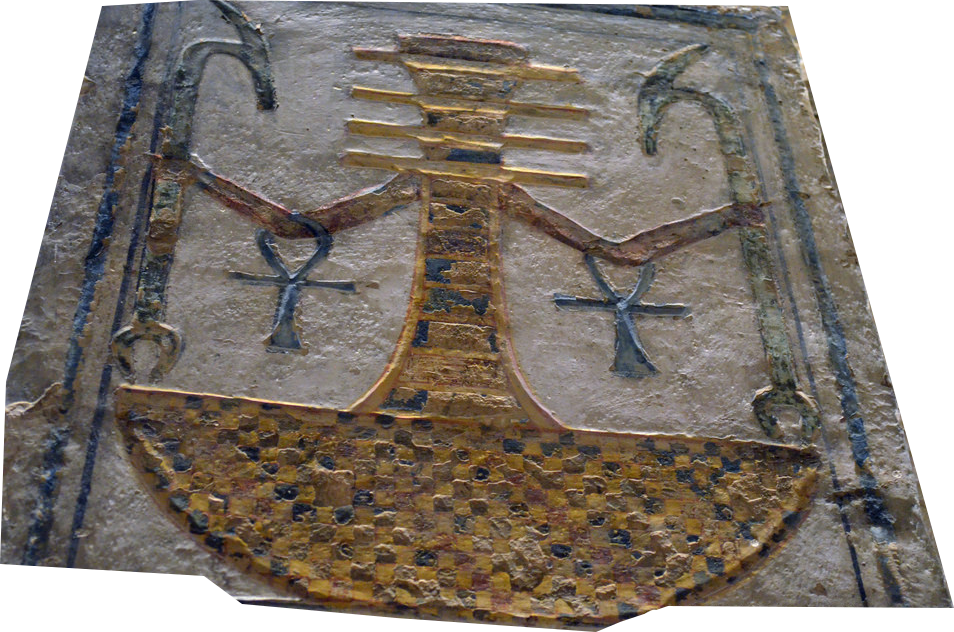 (35e) Tomb (KV11) of Ramses III, New Kingdom Period 20th dynasty in the Valley of the Kings, Luxor c. 1189 BC to 1077 BC The Was Scepter is another symbol, oftentimes represented along with the ankh and djed for purposes of invoking protection or for honorary symbolism on ancient Egyptian amulets. The was scepter is said to represent “strength,” “power” or “authority.” This is not the same as the crozier but similar and is usually depicted with what appears to be either a bird or a serpent’s head, resembling the mushroom (33d; 34h; 35e; 36e; 37b). 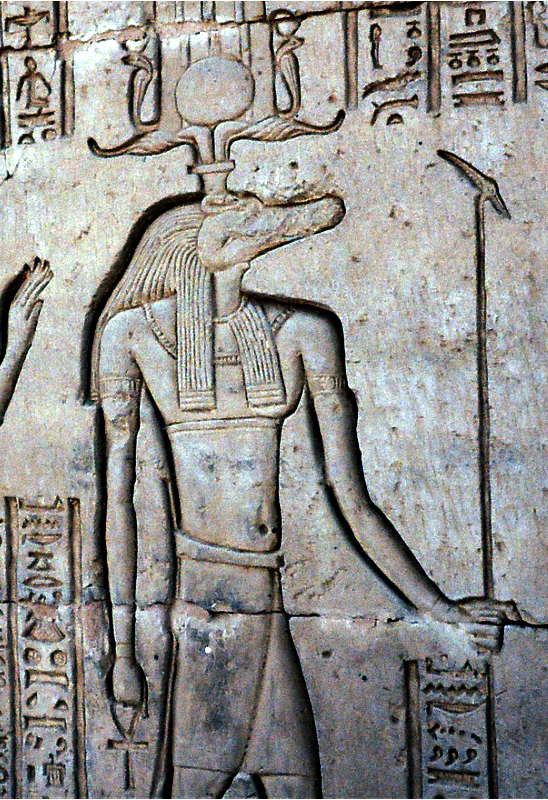 (34h) Sobek at the Temple of Sobek Kom Ombo, Egypt c. 80-50 BC |
Go Back to Page 155